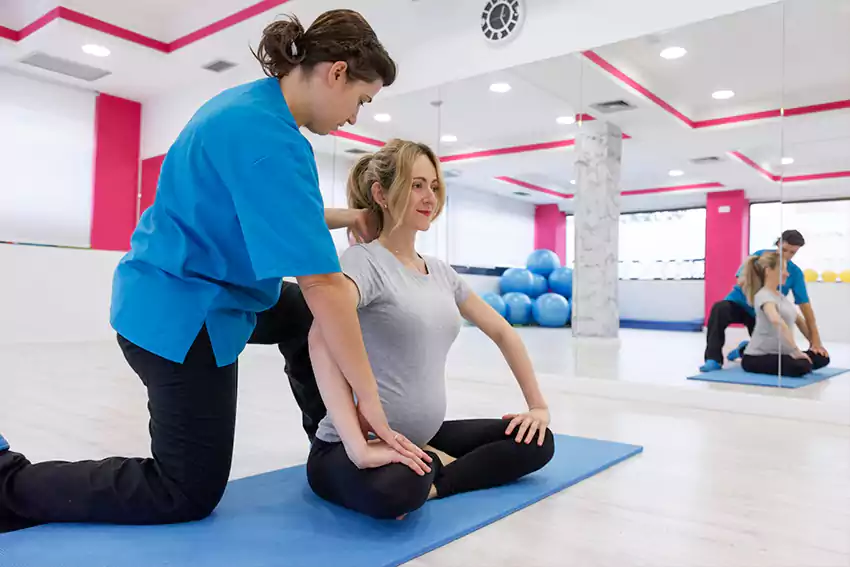
Postural and Ergonomic Training
involves educating individuals on optimal body alignment and workspace design to enhance comfort, productivity, and overall well-being. By integrating proper posture with ergonomic principles, this training aims to prevent injuries and improve efficiency in daily tasks.
Key Objectives of Pelvic floor physiotherapy
Enhance Postural Awareness
Educating individuals on correct posture to reduce strain on muscles and joints, thereby preventing discomfort and potential injuries.
Optimize Work Environment
Adjusting workspaces to fit individual needs, minimizing physical stressors, and promoting a comfortable setting that supports productivity.
Prevent Musculoskeletal Disorders (MSDs)
Implementing strategies to reduce the risk of injuries related to repetitive motions, awkward postures, and prolonged periods of inactivity.
Benefits:
Proper ergonomic setups and posture correction can significantly lower the incidence of MSDs, leading to fewer work-related injuries.
A comfortable and well-designed workspace enhances focus and efficiency, contributing to higher work output.
Investing in ergonomic training demonstrates a commitment to employee well-being, fostering a positive work environment and boosting job satisfaction
Implementation Strategies:
- Needs Assessment: Evaluate existing work environments and identify areas where ergonomic improvements are needed.
- Customized Training Programs: Offer training tailored to specific tasks and roles, ensuring relevance and effectiveness in addressing unique ergonomic challenges.
- Continuous Evaluation: Regularly assess the effectiveness of ergonomic interventions and make necessary adjustments to maintain optimal comfort and productivity.
Incorporating postural and ergonomic training into daily routines not only enhances individual health and comfort but also contributes to a more efficient and harmonious work environment.
